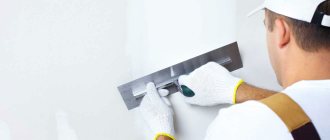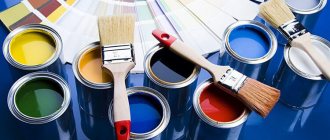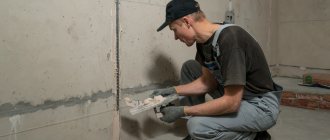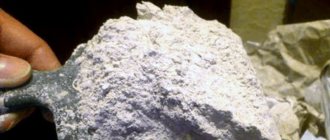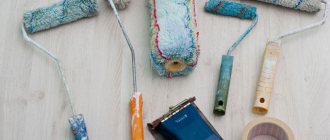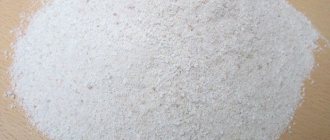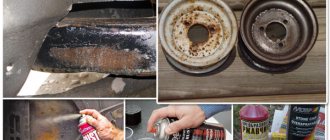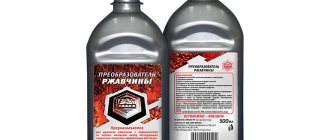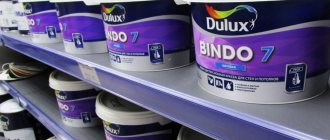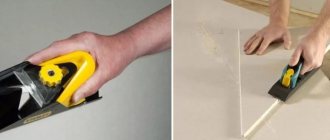Motorists quite often encounter the problem of body corrosion. For long-term operation, the machine requires urgent troubleshooting. In everyday life, there is also often a need to remove rust from metal surfaces, which are quite difficult to clean mechanically. In this regard, to clean rusted parts and other elements, a rust converter is used, which will help preserve metal components from corrosive processes for a long time. For maximum effect, you need to know what a rust converter is, what types of compounds there are and the rules for their use.
Rust converter
This substance is a chemical compound. It is applied to the defective area of the metal and the action of orthophosphoric acid begins, which affects iron oxides.
As a result, during a chemical transformation, a so-called protection is created on the metal.
- If the base of the converter is zinc, then the process is completely different in characteristics.
- Zinc combines with oxygen to form a film that will protect against further corrosion of the metal.
- The converter also contains other substances that provide “rest on the surface of the alloy.”
DIY making
The rust converter contains rather complex components and substances, but it can be made at home. Do-it-yourself rust converter is made on the basis of phosphoric or orthophosphoric acid, which are needed in certain proportions. Acids in the correct ratio are mixed with plain water.
There is also a less expensive method that involves the use of the following components:
- distilled water;
- baking soda;
- lemon acid.
You need to dissolve the acid in water, then add soda. The reaction that appears lasts 30-40 minutes, after which you need to dip a rag into the composition and soak it well in the solution. For safety reasons, the use of rubber gloves is highly recommended. The rag is placed briefly on the affected area, which is then better cleaned. We choose this composition for treating surfaces and removing even deep lesions.
Treatment of metal surfaces using transducers is possible if the affected area is no more than 30%. Otherwise, the use of an anti-corrosion composition will be ineffective.
The products are applied by roller, spray or brush, depending on the type and location of the surface being treated. When working, you must use protective equipment, as the components can adversely affect the eyes and respiratory tract.
Methods for removing rust at home (2 videos)
Converter of different brands (30 photos)
Kinds
The market offers a huge range of converters. Each of them has its own composition and effect on alloy rust.
Main types of converters:
- A simple modifier. It contains phosphoric acid, which combines with corrosion, limiting its further process. As a result, the rust is removed and the defect ceases to be a problem. Important! When working with this substance, do not leave its residues on the metal, otherwise new corrosion cannot be avoided;
- Complex modifier. It consists of active compounds such as phosphoric acid, zinc salt and manganese. It is also called “rust converter with zinc.” All this together allows you to free the alloy from rust and prevent its further occurrence;
- Rust to soil converter. Used to prevent corrosion on the top soil of products. It is also used as an initial layer for paint. The substance is available in two solutions (phosphoric acid and salts). Before applying the modifier to the required surface, they are mixed. They give an excellent result in protecting the metal, but it must be taken into account that the solution is valid for no more than five days;
- Converter with neutralizing action. Is an impregnation. It consists of varnish and inhibitors that prevent rust from spreading further, forming a protective film on the metal;
- Modifier from petroleum composition. It has two types of substances. The first option (1st generation) consists of petroleum-polymer resins, solvents, additives and various inhibitors. This substance does not provide long-term metal protection, so its use is not profitable. The second option (2nd generation) contains an aqueous solvent, which provides reliable protection of the alloy both from rust and mechanical damage.
Advice! When choosing a converter, you must be guided by the following rules: the purpose of the metal being processed, its use and the impact on the environment on the alloy.
How to make a choice
Rust converter can only paint or is guaranteed to remove rust. This is a criterion for effectiveness, and experienced vehicle owners are confident that a good car product after use will permanently reduce the likelihood of a new area of corrosion appearing. Each variety has its own advantages and disadvantages. Paints provide quick results, but may not be effective in the long term due to cracking or blistering of the paint when exposed to atmospheric conditions.
Removing compounds require subsequent painting, are aggressive and are used to create a protective layer. If the rust damage is significant, complex and time consuming work on the converter will be required.
Important!
Whether it needs to be washed off before painting depends on the purpose of use and the composition of the product. Some of them are designed in such a way that the result of use is a protective film that prevents the formation of new sources of destruction. Most often these are products with zinc salts. It is well known that zinc compounds make iron more stable. If orthophosphoric acid is used instead, you should carefully study the instructions for use specified by the manufacturer.
Information may concern the need for removal, but not focus on the composition of the remover. Nowadays they use different means, the most commonly used are silicone remover or good old white spirit.
How to use
The use of converters will give the necessary effect in protecting the metal if the correct steps for applying this substance are followed.
So, step-by-step instructions for using modifiers:
- First stage. The metal surface is cleaned of contaminants and degreased using a solvent;
- Basic actions. The modifier is selected based on the necessary conditions for protecting the alloy. This information is contained on each converter container. And they apply the substance to the alloy;
- The final stage. The modifier completes its chemical reaction. The remains of the converter are removed if required by the product (according to the instructions).
Advice! Before applying the modifier to the metal surface, measure the thickness of the rust. If it is more than 0.1 mm. use sanding material or a grinding machine to reduce the thick layer of corrosion. Only after this they begin to apply the converter to the surface defect.
Using the Converter
The correct procedure for using a particular solution can be clarified from the instructions, but most converters are applied using a similar technology. First you need to prepare the base:
- remove loose rust, which is easily removed mechanically and peels off without much effort;
- clean the metal with a brush or sandpaper;
- wash the surface and degrease.
Then you can proceed to the main stage. The composition should be applied with a brush, spraying, irrigation (depending on its shape and thickness), and wait the allotted time. If there is a strong rusty coating, it is recommended to repeat the application again after 10–15 minutes. After the total exposure time has expired, you need to brush off the loose mass or rinse it off - as indicated in the instructions. After washing, the surface must be thoroughly dried, and then primed and painted, if required.
To obtain decent quality of the finished coating, it is important to follow these tips when working:
- first test any rust converter on an inconspicuous area of the part;
- apply a layer of the thickness specified by the manufacturer (if necessary, use special instruments to measure the indicator);
- wait the required time for the rust to soften and only then begin to remove plaque;
- Carefully wash off the resulting primer layer so as not to scratch the finished film.
Nuances for washing off the substance
Manufacturers offer a large number of modifiers, some of which do not need to be washed off after a chemical reaction with the metal. And others, on the contrary, must be removed, otherwise a reverse reaction will occur in the formation of rust on the alloy.
So, to wash off this substance, follow these rules:
- The modifier is removed only after the treated surface has dried;
- For washing, two compositions are used - silicone solution and white spirit;
- Laundry soap is also used for rinsing;
- After the procedure for washing off the modifier, the metal is washed with water;
- Don't forget to remove excess moisture on the metal.
How to choose a modifier
Buyers often ask this question before purchasing this substance. Which rust converter is better and how to choose it correctly.
The first thing you should pay attention to before purchasing this substance is what the modifier will be used for, because each composition has its own way of influencing the alloy.
- If corrosion occurs on the car body, then it is recommended to use a soil modifier. Another option is to use a converter, the composition of which is distinguished by the presence of stabilizers. This substance is used only on unpainted surfaces.
- You should also check the “customer reviews” site before purchasing. They usually recommend proven brands that guarantee excellent quality and appropriate effect.
To eliminate corrosion on metal with the effect of a painted surface, it is recommended to use concentrated substances. To treat a large area, it is recommended to opt for aerosol cans. In this case, the process will not take much time and effort, and the result will only please you.
Top 5 companies producing products
The best rust converter for cars can be purchased from an affordable price range of domestic products or you can choose more expensive imported products. But the item of preference is determined not by origin and price, but by suitability for the type of metal used in the production of the machine. The climatic conditions in which the owner is located are also important. There are different companies in the presented rating, but reviews of products of all types are invariably favorable:
- The Russian enterprise Khimik, whose products are in demand in various areas of activity, pays a lot of attention to the anti-corrosion protection of metal surfaces. The quality and effectiveness of products is not the only prerogative in use. The trade line is created for various climatic conditions.
- Permatex will suit owners of luxury and racing cars in all respects. You can safely invest a lot of money in purchasing American products if your premium car is rusty - many of them use this chemical.
- The latest developments can be purchased by choosing the products of the domestic company Astrokhim as an item of preference. The presence of our own laboratories guarantees modern and affordable high-quality products in the automotive chemistry industry.
- Many buyers are familiar with car products from the advanced American brand Hi Gear. Its range is extensive and sometimes unique, although not always affordable.
- The recognized Russian leader in this industry is Fenom, which has been repeatedly awarded with international awards. Efficiency of application, guaranteed duration of coverage and ease of use have made the brand mentioned both in the advice of ordinary motorists and in the opinions of experts in the industry.
For reference!
There are other manufacturers of anti-corrosion compounds and car cosmetics in Russia that deserve mention in the top rating. Some auto mechanics are confident that the best domestic product is manufactured by the Agat-Avto company under the name “Tsinkar”. Therefore, you should not focus on one brand; it is better to consult with a specialist, describing your problem.
Price
The price of rust converters starts from 100 rubles. and reaches 4,500 thousand rubles. The cost in this case depends on the composition, manufacturer and volume.
Modifiers, as a rule, ordered via the Internet are cheaper. After all, the cost of the converter, which is sold in hardware stores, includes the salary of the seller, delivery of products, and most often the rental of premises.
When purchasing this substance, you should seek advice from a sales consultant who will help you not make a mistake in choosing a solution.
Rating
The best converter manufacturers according to customer reviews:
- "Tsinkar". Eliminates rust by forming a film in its place. It is a very toxic substance;
- "Laurel". Does not contain aggressive substances. But it requires repeated application of the modifier to the treated surface;
- Sonax. Converts the corrosion layer into a primer composition. The converter is applied in two stages;
- Wurth. It features an environmentally friendly composition. Cannot be used on painted surfaces;
- Hi-Gear. Designed to handle hard-to-reach areas. Cannot be used on paint products.
